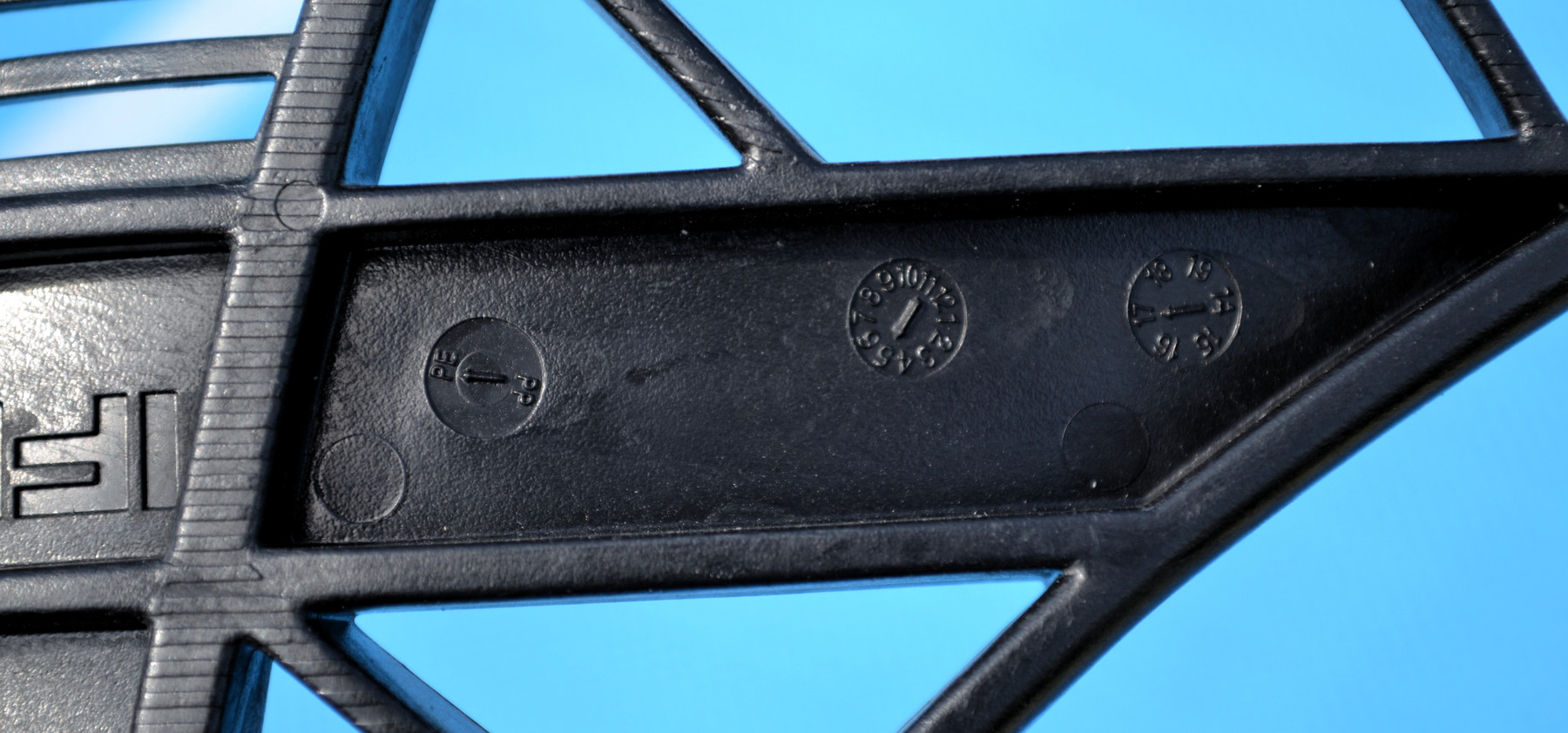The Floorball blade is practically the most important part of the floorball stick. It mostly influences the characteristics of the entire floorball stick during the game. But what influences the characteristics of floorball blades? Each manufacturer tries to reach as many players as possible, so you will find different blades on the market, from completely straight to very curved, left, right, reinforced, hard and soft. However what influences the blade characteristics, is the material from which it is made. Floorball blades are made of 2 materials:
- PP - polypropylen
- PE - polyethylen
How do you know what material your blade is made of?
While this may seem difficult, it is not! Each blade has a pressed wheel on its backand side. On this wheel you will find two pairs of letters - PP and PE. Between these marks there is an arrow that points to the material from which the blade is made. On Floorball baldes you can find several hardness of floorball blades. The PE blades have the following hardness:
- Soft
- Medium
- Hard
If you are looking for the blades that are made of the PP material, you will find it under the hardness below:
- Soft - lightweight
- Medium - lightweight
- Hard - lightweight
Special categories - OxDog blades and Exel blades
OxDog blades and Exel blades are not divided according to the rule above. Both brands have only 2 blade hardnesses - Soft/Medium. According to the rule above, both hardnesses would be made of PE material - polyethylene, but this is not this case. The used materials for OxDog and Exel blades are:
- Soft blade - the blade is made of PE - polyethylene
- Medium blade - the blade is made of PP - polypropylene
What does the material tell you about your blade?
If you know the material from which the blade is made, you will actually know everything about your blade. The material affects all the properties of the blade, so we have prepared for you the advantages and disadvantages of both materials.
Polypropylen (PP)
- A newer type of material.
- The PP is becoming more and more popular.
- The polypropylen is not as stiff as the PE material, resulting in better bending when shooting.
- The softness of the PP does not bounce a ball as much as the PE material. It improves the ball handling.
- The "rubberiness" of the material causes the ball to bounces away from the blade minimally, but it also has a negative effect on the speed of shots.
- The PP material transfers energy to the ball worse than the PE material.
- The blade of this material cannot be bent a lot. The PP material causes the blade to return to its original shape.
- The PP material is rougher than the PE. This point causes problem when shooting on a rubber floor. It scrubs when players shoot by pulling.
- You can recognize the PP material on the first sight, because it's matte material.
Polyethylen (PE)
- A classic blade material.
- Excellent material strength ensures that the shaft energy is well transferred through the blade into the ball.
- This material feels harder than the PP.
- Players can bend the blade according to your needs.
- This material is excellent on the rubber surface.
- The blade is more shiny, that means the ball handling can be more difficult than in case of the PP blade.
We've shown the differences in blade materials to make it easier for you to pick the new blade. You can find a detailed description of the various blades in the category Floorball blades. If you are not sure about the choice and would like to advise, do not hesitate to contact us at the following e-mail address: info@efloorball.net , where are here to help you!










